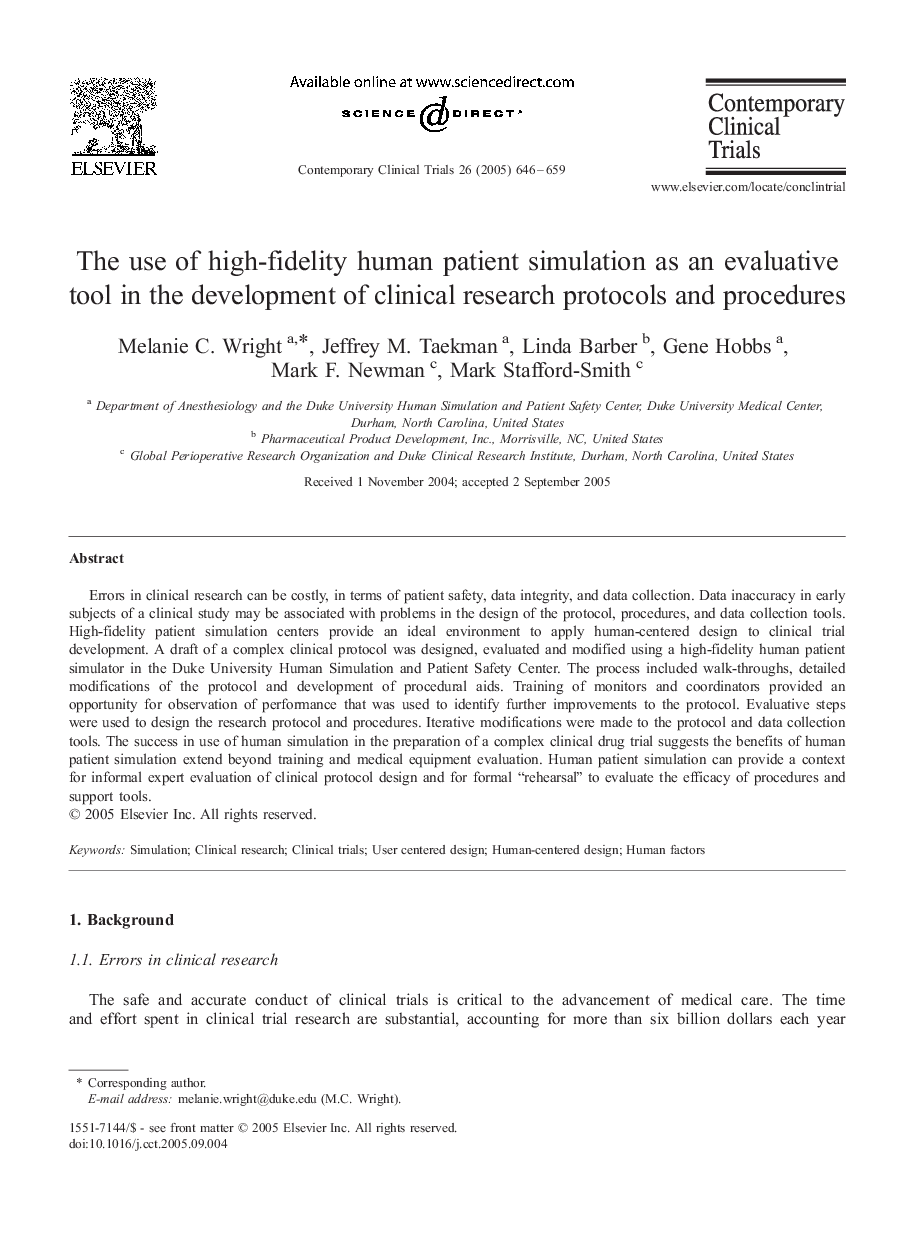| Article ID | Journal | Published Year | Pages | File Type |
|---|---|---|---|---|
| 9293520 | Contemporary Clinical Trials | 2005 | 14 Pages |
Abstract
Errors in clinical research can be costly, in terms of patient safety, data integrity, and data collection. Data inaccuracy in early subjects of a clinical study may be associated with problems in the design of the protocol, procedures, and data collection tools. High-fidelity patient simulation centers provide an ideal environment to apply human-centered design to clinical trial development. A draft of a complex clinical protocol was designed, evaluated and modified using a high-fidelity human patient simulator in the Duke University Human Simulation and Patient Safety Center. The process included walk-throughs, detailed modifications of the protocol and development of procedural aids. Training of monitors and coordinators provided an opportunity for observation of performance that was used to identify further improvements to the protocol. Evaluative steps were used to design the research protocol and procedures. Iterative modifications were made to the protocol and data collection tools. The success in use of human simulation in the preparation of a complex clinical drug trial suggests the benefits of human patient simulation extend beyond training and medical equipment evaluation. Human patient simulation can provide a context for informal expert evaluation of clinical protocol design and for formal “rehearsal” to evaluate the efficacy of procedures and support tools.
Keywords
Related Topics
Health Sciences
Medicine and Dentistry
Medicine and Dentistry (General)
Authors
Melanie C. Wright, Jeffrey M. Taekman, Linda Barber, Gene Hobbs, Mark F. Newman, Mark Stafford-Smith,
